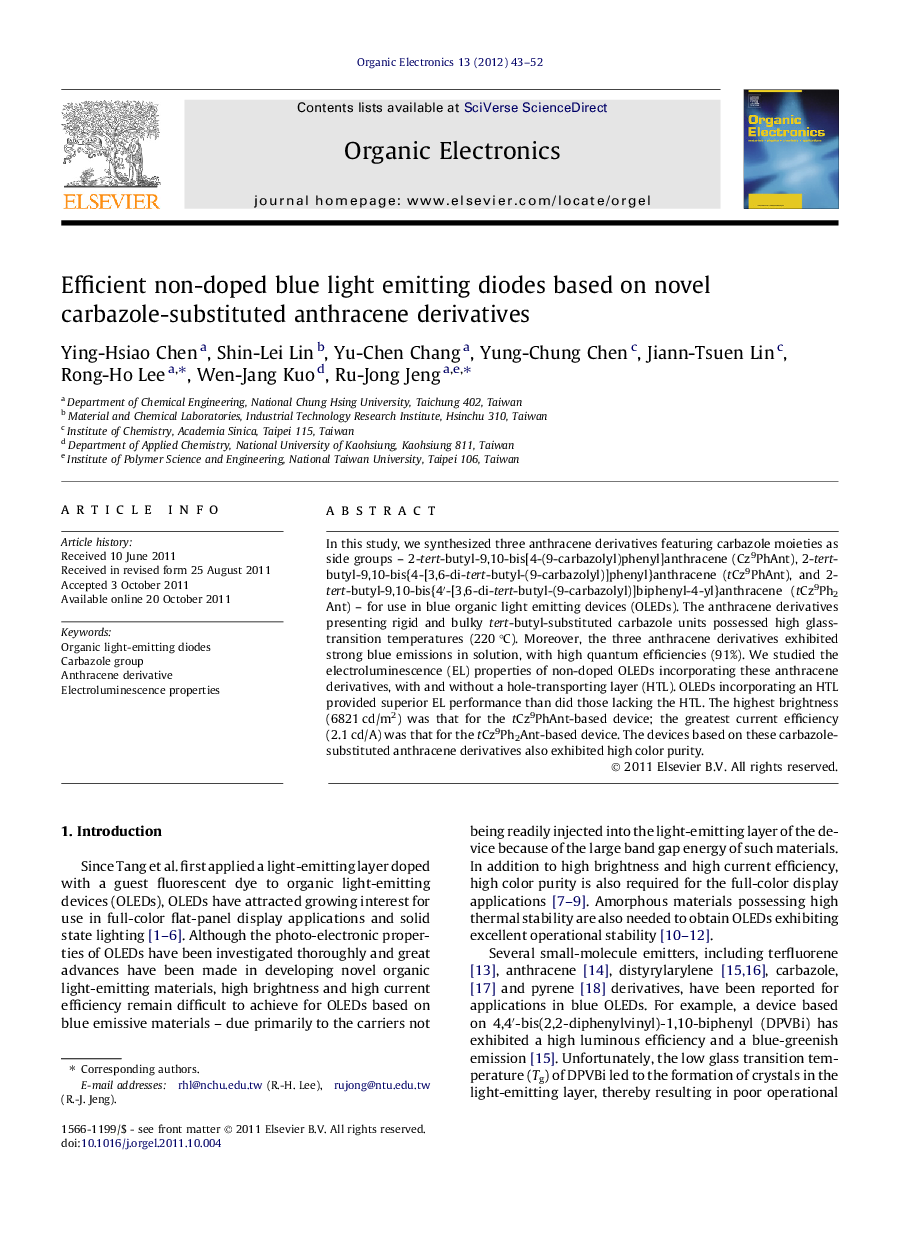| Article ID | Journal | Published Year | Pages | File Type |
|---|---|---|---|---|
| 1264622 | Organic Electronics | 2012 | 10 Pages |
In this study, we synthesized three anthracene derivatives featuring carbazole moieties as side groups – 2-tert-butyl-9,10-bis[4-(9-carbazolyl)phenyl]anthracene (Cz9PhAnt), 2-tert-butyl-9,10-bis{4-[3,6-di-tert-butyl-(9-carbazolyl)]phenyl}anthracene (tCz9PhAnt), and 2-tert-butyl-9,10-bis{4′-[3,6-di-tert-butyl-(9-carbazolyl)]biphenyl-4-yl}anthracene (tCz9Ph2Ant) – for use in blue organic light emitting devices (OLEDs). The anthracene derivatives presenting rigid and bulky tert-butyl-substituted carbazole units possessed high glass-transition temperatures (220 °C). Moreover, the three anthracene derivatives exhibited strong blue emissions in solution, with high quantum efficiencies (91%). We studied the electroluminescence (EL) properties of non-doped OLEDs incorporating these anthracene derivatives, with and without a hole-transporting layer (HTL). OLEDs incorporating an HTL provided superior EL performance than did those lacking the HTL. The highest brightness (6821 cd/m2) was that for the tCz9PhAnt-based device; the greatest current efficiency (2.1 cd/A) was that for the tCz9Ph2Ant-based device. The devices based on these carbazole-substituted anthracene derivatives also exhibited high color purity.
Graphical abstractFigure optionsDownload full-size imageDownload as PowerPoint slideHighlights► We synthesized three anthracene derivatives featuring carbazole moieties as side groups for use in blue OLEDs. ► Anthracene derivatives exhibited strong blue emissions in solution, with high quantum efficiencies (91%). ► A brightness of 6821 cd/m2 and a current efficiency of 2.1 cd/A were obtained from these anthracene derivatives based OLEDs.
